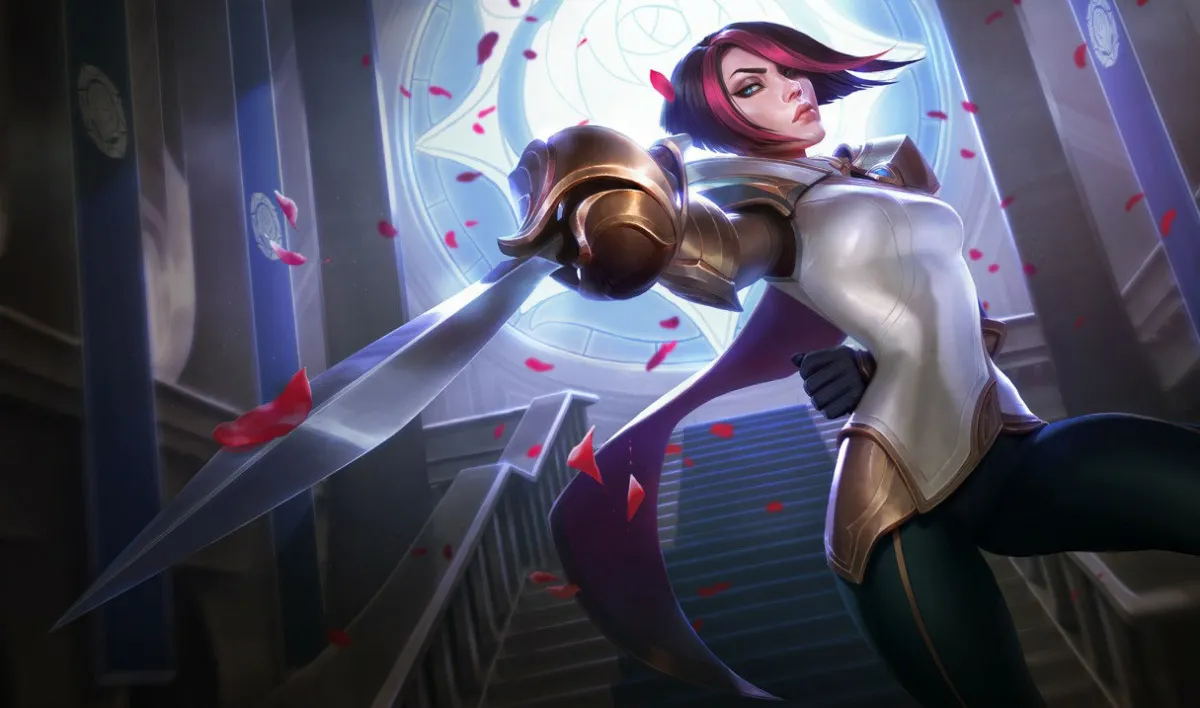There are a variety of top laners that counter each other in League of Legends. Some vary in strength based on the current meta, while others vary depending on matchups. For top laners, there are three archetypes of champions that fluctuate as the meta changes: hypercarries, support-style champions, and split-pushers. We’ll break down each one of these archetypes, and then show you the six best top lane champions in League of Legends.
Split-Pusher top laners in LoL
Split-pushers have a weak laning presence and a weaker ability to trade damage until they get a few items. Once they get some items and can duel with their opponents, they just steamroll through the lane, taking turrets until the enemy team sends forces to stop them.
Support-Style top laners in LoL
Support-style top laners are the beefiest tanks in the game. They can trade damage with their lane opponent reasonably well, but their main strength comes from surviving in their lane until they can build up enough tanky items to join their team in all-out team fights. There are, however, a few intriguing support-style top laners that are vastly different from others.
Top Lane Hypercarriers in LoL
Finally, we have the top-lane hypercarries. These champions put out high damage in the blink of an eye and can usually hit multiple targets at once with high cleave and AoE damage.
This list of top-tier champions can change depending on a number of things. Sometimes the meta shifts for no reason other than players’ tastes, but usually, there’s some kind of balance adjustment behind it. It can be difficult to keep up with the flavor-of-the-month champs, so let us do that for you.
Here are the best top laners for League’s Patch 13.21.
Jax
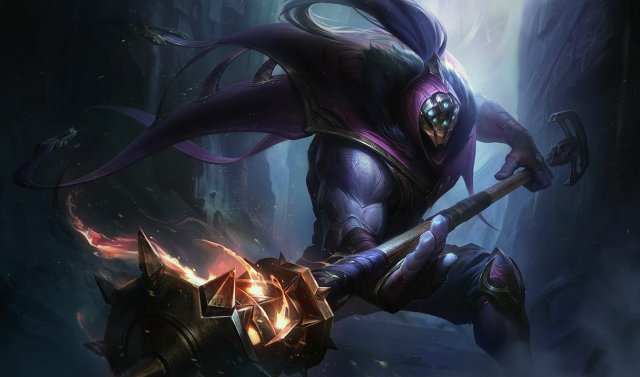
Pros
- The new AP build works in the top lane
- Hybrid damage makes it hard to itemize against
- Scales well with both builds
Cons
- Laning phase is not that strong
- Can be stopped with hard CC
- AP build makes Jax squishy without ultimate
After receiving his mid-scope update and his visual and audio update, Jax has returned as one of the best-performing top laners in the game with a respectable 48.49 percent win rate. Despite receiving some nerfs in Patch 13.14, he is still a powerful pick to rely on in melee matchups. He’s one of the best top lane duelists out there, capable of carrying the game alone.
Jax Item build
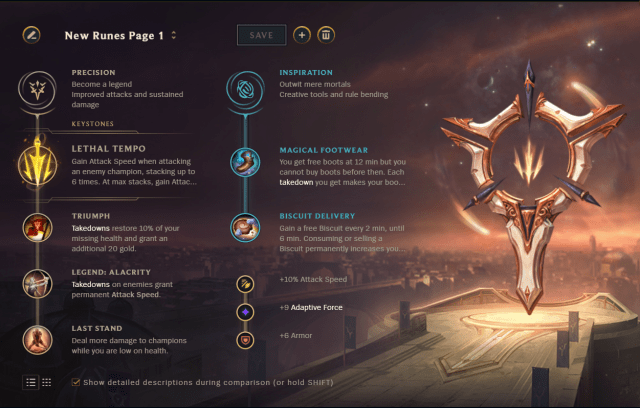
Most Jax players only run the AD build because it gives them more survivability in the teamfights. The main keystone rune is Lethal Tempo, which scales and synergizes well with Jax’s own passive. It grants him stronger early-game trades and exceptional skirmishing potential later.
In the rest of the Precision tree, choose Triumph, Legend: Alacrity, and Last Stand as the remaining runes. We have already mentioned most bruisers are running this combination of runes, and Jax is no exception. For the secondary tree, most run Inspiration with Magical Footwear and Biscuit Delivery. Some, however, also like running Resolve tree, especially in weaker matchups: Bone Plating and Unflinching are great minor runes to survive incoming crowd control and burst damage.
Build-wsie, the main Mythic item is still Divine Sunderer since it grants attack damage, health, ability haste, and sustain. The new Spear of Shojin is the second core item since it greatly reduces the abilities’ cooldown. Once you get these two items, you have to decide whether you want to go for more survivability or offensive stats: Zhonya’s Hourglass satisfies both criteria, so it’s the best third item. Other options are Frozen Heart, Death Dance, and Guardian Angel. If you need more magic resistance, though, pick up Wit’s End or Maw of Malmortius.
Ability priority
Despite having different trade patterns, the ability order is the same for both Jax builds: R>W>E>Q. The W, Empower, is Jax’s main source of damage since it has the lowest cooldown. It’s also an auto-attack reset, making it perfect for short trades. After that, max E, Counter Strike, second to reduce incoming damage and stun the enemies more often. Since Q, Leap Strike, doesn’t reduce its cooldown by much when leveling up, max it for last.
Game plan
Jax’s current high success lies in his ability to adapt his build based on the lane opponent or team. Generally speaking, Jax has strong burst damage with his AP build, while he excels in split pushing and duels with his AD build. We also mentioned how his trading patterns change: AP build for fast and short trades, AD for extended skirmishes. Try to assess the opponents’ weaknesses and exploit them. By doing so, you should always know which version of Jax you should be going for.
Regardless, Jax is highly reliant on his item spikes, so avoid being too aggressive early on. It’s not easy to play from behind, so be ready to give up lane priority or farm if needed. Once you get the items, you can look to play more offensively. There aren’t many champions that can fight you in a one-on-one situation, so take advantage of this and put pressure on one side of the map that is far away from where the other players are standing. Remember to always stack your passive, if possible, prior to a fight: it will make you a lot stronger than you expect.
Aatrox
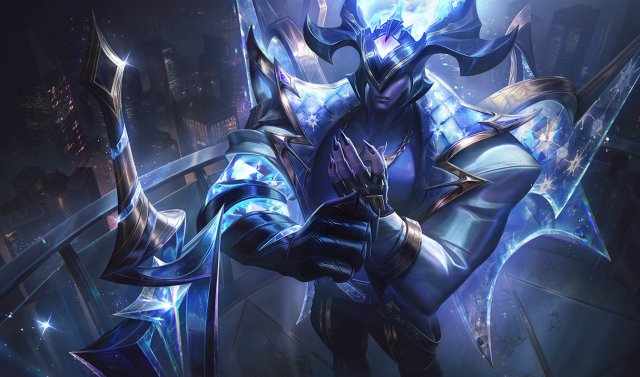
Pros
- Buffed this patch
- Fares well against most meta champions
- Unparalleled sustain
Cons
- Combos are hard to master
- Somewhat lacks mobility
Aatrox got an indirect buff with the new Spear of Shojin, granting him a much stronger mid-game spike with the additional ability haste. As a champion that bases most of his damage on spells, it’s not surprising to see him rise back into the meta with a 49.87 percent win rate and more than two million games played according to OP.GG.
Aatrox Item build
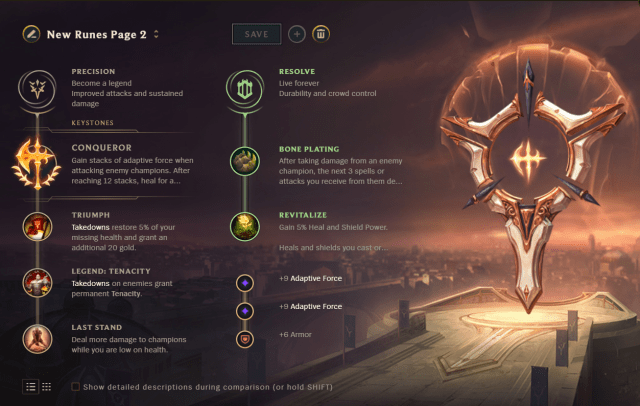
The main keystone rune for Aatrox is none other than Conqueror. There are no other runes that synergize as well as this one. Not only does the rune increase Aatrox’s adaptive force during the skirmishes, it also grants additional healing at maximum stacks. For a champion with a kit based almost entirely on sustain, this is the icing on the cake.
By running with the Precision tree, choose Triumph, Legend: Tenacity, and Last Stand as the minor runes. You can run Legend: Alacrity if the enemies don’t have much crowd control in their kits, as the attack speed will make your trades and auto attacks more fluid. Make sure to not change the other two, as they are the most efficient runes of the entire tree.
From the secondary tree, instead, go for Bone Plating and Revitalize. The latter is a must, as it works well with Aatrox’s innate healing, while Bone Plating is strong against top laners that excel in short trades early on. If that is not the case, consider swapping it for Second Wind from the same row.
Aatrox players have been building several different builds, depending on the matchup and what kind of role the champion needs to fulfill in the game. That said, the most common itemization sees Eclipse as the main Mythic item, followed by Spear of Shojin and Serylda’s Grudge. It’s a much stronger mid-game item compared to the previous Black Cleaver. The new trio of items guarantees similar damage output and lower cooldowns.
To round off the build, get some defensive items. Death Dance is a must due to its passive, and the last one can be either Sterak’s Gage or Guardian Angel, depending on whether you need extra health or extra armor. Maw of Malmortius is a strong alternative against magic damage-heavy team compositions.
Ability priority
The ability maxing order for Aatrox is R>Q>E>W. His Q, the Darkin Blade, is his main source of wave clearing and damage during the laning phase. Max E, Umbral Dash, second to get a lower cooldown the ability and get increased Omnivamp as well. Since W, Infernal Chains, is a situational ability, and it doesn’t deal much damage, max it last.
Game plan
While Aatrox got a major buff overall, his damage is technically weaker early on. This is because the base damage on his ability got lowered so he needs to get more attack damage from his items to compensate for that loss. With this in mind, look to play more conservatively during the first minutes of the game, and become more aggressive as the game goes. On paper, you should be rewarded with higher damage on your Q as soon as you get the first component of the Mythic item, the Serrated Dirk. Once you get that, you should have the upper hand on most trades.
Later in the game, your goal will be to either find a flank angle and try to shut down a carry, or tank for your team as a front liner. Aatrox, however, would prefer to have a second champion to help him tank the damage since he will be squishier with the Eclipse build.
If you’re particularly fed, you can also consider putting pressure on the side lane by split pushing and joining teamfights with your teleport. It’s a riskier strategy, but it can net you bigger advantages when properly executed.
Darius
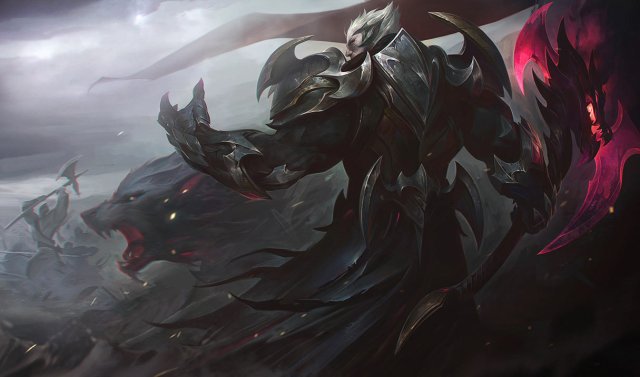
Pros
- Strong in lane
- Powerful snowball potential
- Tanky
Cons
- Falls off a bit in the late game
- No gap closers or escape tools
- Incredibly hard to play from behind
Darius is one of the most banned champions in the top lane, and it’s for a good reason. The Hand of Noxus is one of the strongest laners in the game, and as long as you have a proper understanding of most matchups, you will be able to get out of the laning phase with a substantial lead and get closer to a victory. He’s still going strong in Patch 13.21 with more than two million games played and a 49.19 percent win rate.
Darius Item build
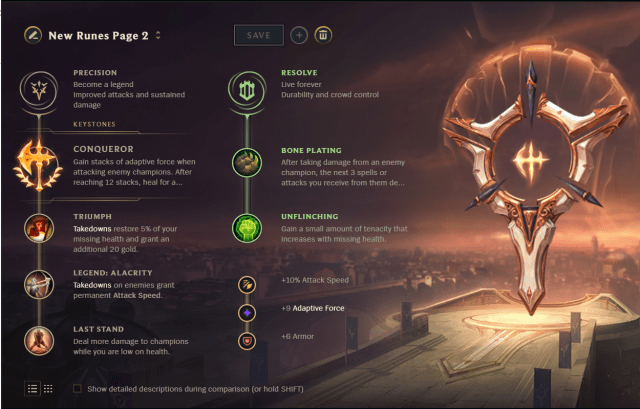
As Darius, your main goal is shredding through the enemy team with your powerful abilities and basic attacks. When it comes to runes, you should aim to elevate your damage even more by picking Conqueror. With that rune, you will be gaining stacks of Conqueror that provide you with adaptive damage. Moreover, you will also heal a bit when fully stacked, allowing you to survive longer in fights.
Other runes you should pick are pretty standard for AD-based bruisers. Triumph will heal you with every takedown, elevating your fighting potential. Legend: Alacrity will increase your attack speed, while Last Stand will make you deal more damage while you’re low on health.
Resolve is the only sensible option for the second tree, with Second Wind and Unflinching standing out as the strongest runes. The former will heal you after taking damage from an enemy champion, while the latter will grant you a bit of much-needed tenacity.
Build-wise, Darius hasn’t received many changes to his itemization recently. You should always grab Stridebreaker as your first item for the additional AoE damage and slow. It’s perfect for chasing after enemies and improving the hit rate on your Q. Afterward, pick Dead Man’s Plate for the additional movement speed and tankiness and Sterak’s Gage for additional damage. Round off the build with a Force of Nature to increase your magic resistances and a Gargoyle Stoneplate so you can tank longer during the late-game fights.
Ability priority
The case is simple when it comes to Darius’ ability priority. You should go for R>Q>E>W. Your Q, Decimate, is the main tool for wave clearing, trading, and skirmishes. Once you max it out, you should put points in E, Apprehend, to lower its cooldown and get the increased percentage of armor penetration.
Game plan
As Darius, you should win against most champions in the top lane. There are some exceptions: ranged champs that can slow you down or immobilize you in one way or another, like Teemo. Still, Darius is a very dangerous champ to play against, and you should utilize your potential by trying to start the snowball as early as the laning phase.
If you manage to get off the top lane with a clear advantage over the enemy laner, you should continue to snowball. At that time of the game, hardly any enemies can match your strength unless they are fed. Still, your main goal is to be in front of your enemies all the time—not only squishy carries but bruisers, tanks, and supports alike. You shouldn’t have many issues getting through any of them.
It’s pivotal for you to try to end the game as fast as possible. Once the game reaches its later stages, where almost every champion has a full build, you won’t be as big of a threat as in the first 30 minutes since it’s easy to kite you out.
Camille
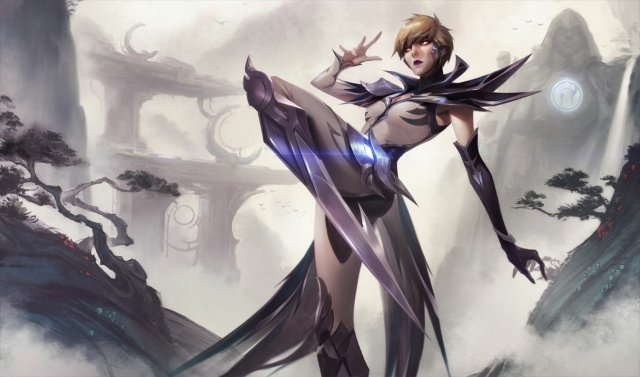
Pros
- Has one of the best dueling potential
- Melts tanks with her Q
- Scales well into the late game
- Great for picks
Cons
- Mechanically demanding
- Struggles from behind
- Weaker than other champions early on
The top lane champion pool has been getting more and more diverse over the last patches, and Camille is making a return as a top-tier pick.
Even though she has some bad matchups against other meta champions, she’s one of the best counter-picks against tanks and some damage-oriented top laners like Jayce. Her dueling potential can only be beaten by champions like Fiora or Jax, and even then, it’s usually more of a skill matchup. Add in her 50.74 percent win rate, and she’s definitely a champion to play to climb the ladder.
Camille Item build
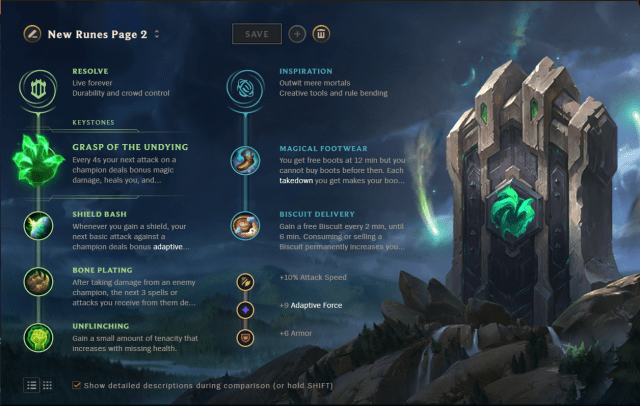
Camille’s main rune setup hasn’t changed since when she first landed on Summoner’s Rift. The keystone rune is still Grasp of the Undying, which got even stronger after the buffs introduced this patch. She will now gain maximum health when proccing the rune, making her tankier throughout a game.
Shield Bash, Bone Plating, and Unflinching are the complementary runes from the Resolve tree. Shield Bash synergizes perfectly with her passive, increasing her damage during skirmishes or trades. Bone Plating has a similar function since it reduces the enemy’s damage. Unflinching, on the other hand, gains more value during teamfights when multiple crowd controls might be used on her.
The secondary tree, instead, is the Inspiration tree with Biscuit Delivery and Magical Footwear. These are pretty common runes from this tree. If you don’t want the cookies for extra health and mana, swap them out for Cosmic Insight.
The build for Camille is slightly different compared to the past. While her main Mythic item is still Divine Sunderer, her second core item is now Ravenous Hydra. The item was adjusted in Patch 13.1b, and it’s now much stronger to pick up. Thanks to the new passive, Camille can get lots of extra attack damage simply by farming minions. And given that she wants to stay in the side lane and split push, getting those stacks is a piece of cake. After these two items, you want to grab Death Dance and Maw of Malmortius for some armor and magic resistance and close off the build with a Guardian Angel.
Ability priority
Camille’s ability order is fairly straightforward: R>Q>E>W. Having said that, you usually want to start with W, Tactical Sweep, first since it guarantees a good level one short trade and gives immediate sustain. After that, max Q, Precision Protocol, since it’s the spammable spell. Her E, Hookshot, is the second ability to max because it’s her main mobility tool and gap closer.
Game plan
The game plan on Camille is to make sure you can kill the strongest threat on the enemy team. She has great backline access and good enough damage to kill a carry single-handedly. That said, Camille needs a few items before she can start doing her own thing. Therefore, her main goal will be to focus on farming and waiting for those two core items.
Once she gets both, you should play on the side lane most of the time and look for potential teleport plays or flanks after pushing waves. If you have a good matchup or you’re getting ahead, you can also bully out the enemy top laner and look to split push rather than grouping up with your allies.
As long as you don’t fall behind too much early on, Camille will become a threatening menace later in the game, giving your enemies a really hard time.
Fiora
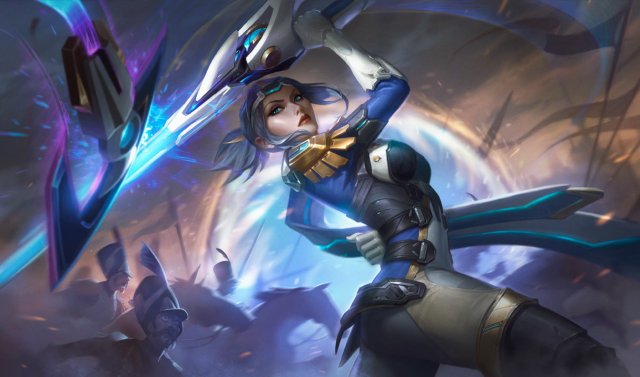
Pros
- Mobile
- High damage
- Powerful in every stage of a game if played well
Cons
- Hard to learn but rewarding
- Tough to play from behind, and easy to make mistakes
When it comes to playmaking top laners that can change the outcome of a game with their high carry potential, Fiora is one of the best champions. Her aggressive and rewarding kit requires a bit of time to master, especially in terms of positioning and mechanical plays, but it’s all worth it in the end.
With Fiora in the hands of an experienced player, she can outplay her enemies in most solo skirmishes and provide valuable damage and impact in teamfights. This is why her win rates skyrocket the higher you go on the ranked ladder: Fiora has a win rate of nearly 51 percent in Master Elo and above, according to OP.GG.
Fiora Item build
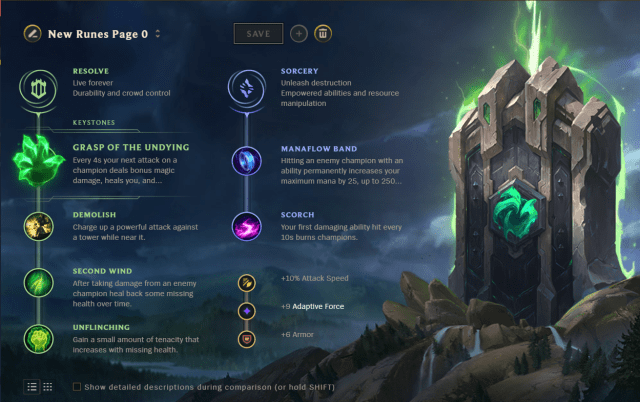
Fiora is an aggressive fighter who goes for short trades during the laning phase, so the best keystone rune is Grasp of the Undying from the Resolve tree. With that under your belt, you will increase both your damage and sustain at all stages of the game while also granting Fiora extra health to make her tankier.
The other runes from the primary tree have the goal of increasing survivability and split push potential. When it comes to the latter, Demolish works perfectly since it makes you charge powerful attacks against towers. With that, Fiora will always pose a significant threat in solo lanes, especially later in the game when she gains a heap of attack damage.
In terms of survivability, you should pick Second Wind and Unflinching. The first restores more health during the laning phase, while Unflinching grants extra Tenacity to reduce enemies’ incoming crowd control.
Fiora is quite mana-hungry, especially in the first minutes of the game, so it’s smart to choose Manaflow Band to enhance your maximum mana. Scorch, on the other hand, is a perfect rune to boost your trading capability, further increasing your damage.
As far as items go, Fiora should pick Divine Sunderer as her first item. Afterward, it’s pivotal to grab Ravenous Hydra for better wave clearing, higher damage, and lifesteal. Complete the first trio of core items with a Death Dance if you need resistances. If you’re well ahead and you’re looking to split push, get Hullbreaker instead, as it will be a more cost-efficient item.
Round off the build with a Spear of Shojin and one item between Guardian Angel and Maw of Malmortius. In most scenarios, the former will be the go-to choice since you’ll get access to the revive effect. Chempunk Chainsword can also be a good situational item against champions with lots of sustain: pick it when it’s necessary.
Ability priority
When playing Fiora, you should go for R>Q>E>W. The champion is fantastic in solo fights mostly due to her Q, Lunge, which deals quite a lot of damage and has a low cooldown at max rank. Afterward, you should put points in your E, Bladework, so that you can increase your damage during skirmishes and fights.
Game plan
Fiora is a fantastic solo laner, but she struggles a lot with wave clearing since she has no tools to take care of minion waves as quickly as other top laners. Her Q and W make it really easy to close the gap and dodge upcoming attacks, though, giving her a strong advantage in skirmishes. For these reasons, you should always try to bully out the enemy top laner by making short and fast trades, ideally hitting the vitals. Just make sure you’re not fighting in the middle of a minion wave, which will deal a lot of damage when stacked.
Once you unlock your ultimate, you ideally want to cast it on a squishy target and delete them almost instantly by hitting all the vital points. This, however, is easier said than done. While Fiora is mobile thanks to her Q and passive, you won’t be as tanky as other top laners, so the enemy team compositions will often focus on deleting you first. As a result, it’s not always the best option to go for the back line. It can sometimes be better to use your ultimate on the enemy fighter in the front line so you can take the danger off your teammates’ shoulders. You will need to evaluate the situation in every game.
If you fall behind, you should try split-pushing. With Demolish and Fiora’s kit, you can take down turrets very quickly in the mid-game as her early struggles are alleviated and can possibly open the way for your team to return to the game.
Garen
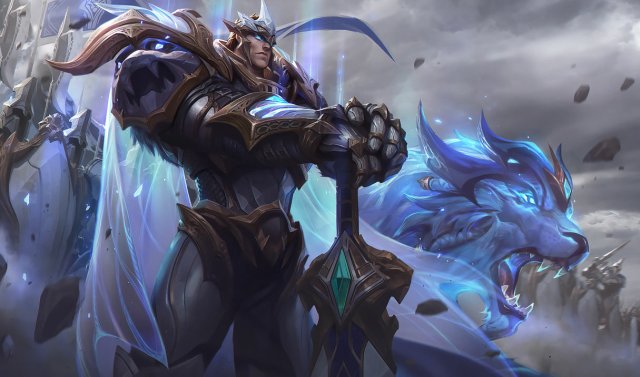
Pros
- One of the easiest champions to pick up
- Passive helps out-sustain most top laners
- Strong dueling potential
- Incredibly annoying to deal with
Cons
- Can be abused by displacement abilities
- Less mobile than other top lane champions
- Struggles in specific matchups
Even though Garen is rarely played at the highest Elos, he’s one of the most popular picks in the lower ends of the solo queue ladder. And thanks to his simple kit, players are finding consistent success with him: 52.5 percent win rate at gold Elo in this patch, according to OP.GG.
This is because Garen fares quite well against most of the other meta champions. His ultimate and damage abilities allow him to turn around one-vs-one duels in his favor, even if he falls behind during the laning phase. And once he gets into the mid and late-game, Garen can be both a strong side laner but also join the fights and blow up the enemies with his AoE damage.
Garen Item build
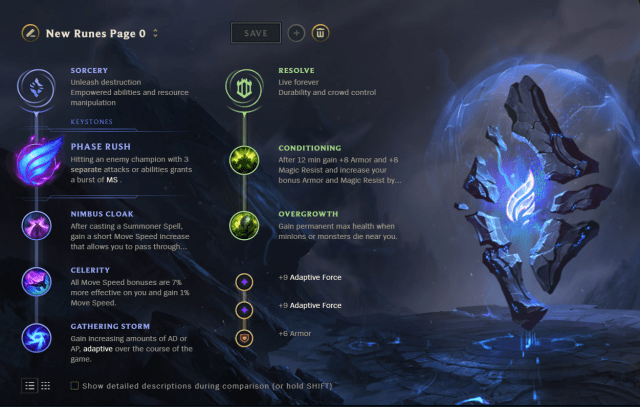
Multiple rune setups work for Garen, and they all depend on the matchup. The most common one now is the Phase Rush setup, with Nimbus Cloak, Celerity, and Gathering Storm. Paired with Conditioning and Overgrowth from the Resolve tree, Garen gets a balanced combination of mobility and tankiness from this setup.
Having said that, some matchups will require Garen to give up one of the two. Against melee champions that have the tendency to fight Garen in close combat, you can get Conqueror to increase your damage during the skirmish. The minor runes are going to be Triumph, Legend: Tenacity, and Last Stand. For the secondary tree, run Resolve with Conditioning and Overgrowth.
On paper, there is also a third option, and it involves Grasp of the Undying. It works well against tank champions that you cannot beat one-on-one like Cho’Gath, so you take this rune for better scaling. In most scenarios, though, this setup won’t be needed.
Build-wise, each rune setup also requires a different combination of items. The Conqueror setup usually runs Trinity Force or Stridebreaker as Mythic items, followed by Black Cleaver, Hullbreaker, Dead Man’s Plate, Force of Nature, and Guardian Angel. With Phase Rush, instead, you always choose Stridebreaker followed by Hullbreaker to get better split-pushing power. The rest of the build is similar to the Conqueror setup.
When going Grasp of the Undying, though, you will be going with Heartsteel to synergize its passive effect with the rune’s health stacking. Sunfire Cape, Thornmail, Randuin’s Omen, and Spirit Visage make up the rest of the build, but as long as you build tanky items instead of bruiser items, you will not mess up.
Ability priority
While there are different rune setups, the maxing order is identical for all three: R>E>Q>W. Your E, Judgment, is Garen’s main source of damage during trades, and it’s also the best wave-clearing ability. After that, max Q, Decisive Strike, to increase the movement speed gained upon activation. Since the tenacity value is flat on W, Courage, max it for last.
Game plan
Garen’s first spike arrives as soon as he gets to level six. Before that, you want to focus on farming and go for short trades with his Q-E combo. Don’t be afraid to trade heavily since you will have the passive to help you heal up again.
Unless you fall extremely behind, all you have to do is put some side lane pressure, especially once you close out Hullbreaker. Use the minion’s enhanced pushing power and try to kill the enemy. If he leaves to join the fights, trade his play by taking down turrets so you can open up the map.
Later in the game, decide whether you can stay on the side lanes or if you have to help your team by joining the fights. Try to leave your ultimate for the most important enemy threat and use it to finish him off at the start of a teamfights. With the numerical advantage, it will be easier to come out victorious.

